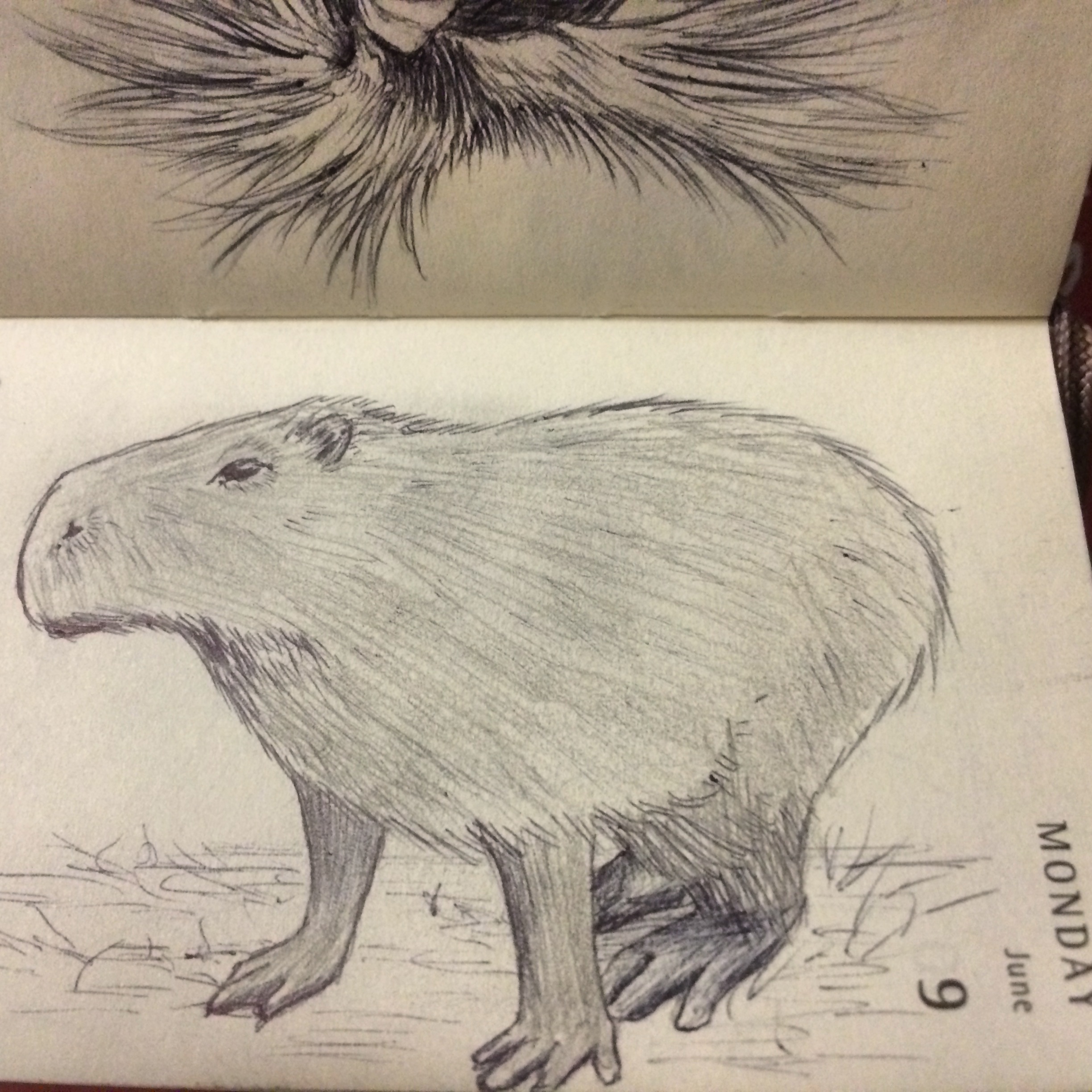The capybara is the largest rodent in the world, followed by the beaver, porcupine, and mara. Its closest relatives are guinea pigs and rock cavies, and it is more distantly related to the agouti, chinchillas, and the coypu. Native to South America, the capybara inhabits savannas and dense forests and lives near bodies of water. It is a highly social species and can be found in groups as large as 100 individuals, but usually lives in groups of 10–20 individuals. The capybara is not a threatened species, though it is hunted for its meat and hide and also for grease from its thick fatty skin which is used in the pharmaceutical trade. The adult capybara grows to 3.51 to 4.40 ft in length, 20 to 25″ tall at the withers (the shoulder) and typically weigh 77 to 146 lb, with an average in the Venezuelan llanos of 108 lb. The top recorded weights are 201 lb for a wild female from Brazil and 162 lb for a wild male from Uruguay. Capybaras have slightly webbed feet and vestigial tails.
This blog contains Amazon Affiliate links. As an Amazon Associate, I may earn from qualifying purchases.Capybara
Posted by mnaitodesigns@gmail.com Jun 9, 2014 Daily Sketch animal portrait, animal portraits, capybara, largest rodent, nature, rodent, wildlife Leave a Comment



Recent Comments